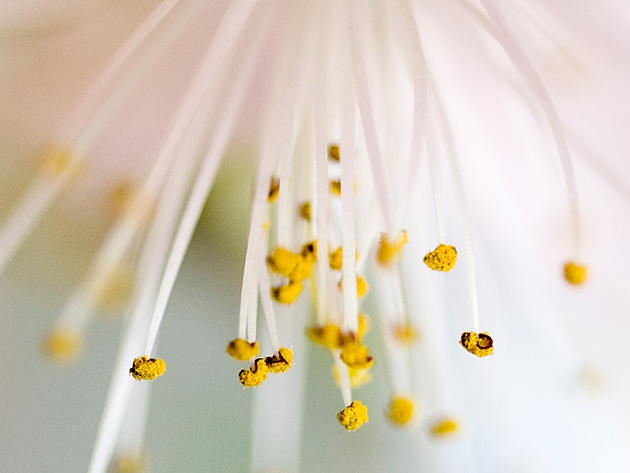The Power of Tea Tree Oil
April 19, 2014
Produced in Australia from the tree M. alternifolia, tea tree oil acts as an antiseptic, fungicide, insect deterrent, and more. It has been used in Australia by aborigines for generations and, since the
country's colonization, has spread to the rest of the world.
country's colonization, has spread to the rest of the world.
Tea tree oil, which can be found as an essential oil as well as in creams, ointments, shampoo,
and even toothpaste, can be used to treat a staggering variety of conditions, including: acne,
arthritis, athlete's foot, burns, cuts, dandruff, eczema, gingivitis, infection, insect bites and stings,
lice, muscle sprains, psoriasis, and rashes. And that's just a partial list!
and even toothpaste, can be used to treat a staggering variety of conditions, including: acne,
arthritis, athlete's foot, burns, cuts, dandruff, eczema, gingivitis, infection, insect bites and stings,
lice, muscle sprains, psoriasis, and rashes. And that's just a partial list!
Potential Benefits
The exact cause of tea tree oil's effectiveness is difficult to ascertain, and researchers are still
looking into just how much the natural remedy can do for us. Newer studies have looked at its
ability to stop the spread of sometimes-deadly methicillin-resistant staphylococcus aureus in
hospitals.
looking into just how much the natural remedy can do for us. Newer studies have looked at its
ability to stop the spread of sometimes-deadly methicillin-resistant staphylococcus aureus in
hospitals.
Use Safely
While there are plenty of benefits to using tea tree oil, its strength can also be problematic,
even dangerous. The Mayo Clinic advises that it's not safe to ingest or take tea tree oil internally,
and it is considered particularly harmful if ingested by pets.
even dangerous. The Mayo Clinic advises that it's not safe to ingest or take tea tree oil internally,
and it is considered particularly harmful if ingested by pets.
Also, like most natural remedies, the US Food and Drug Administration does not regulate tea
tree oil as it does other medicines, leaving no standard quality of tea tree oil products. And,
while many people enthusiastically support tea tree oil, it is no substitute for professional
medical care.
tree oil as it does other medicines, leaving no standard quality of tea tree oil products. And,
while many people enthusiastically support tea tree oil, it is no substitute for professional
medical care.
Yet, many people agree that, if nothing else, tea tree oil should be a part of your first aid kid
in case of bites, burns, or scrapes. But who knows? You might find yourself using it for much
more than that.
in case of bites, burns, or scrapes. But who knows? You might find yourself using it for much
more than that.
Did you know that Siren Serum's main ingredient is Tea Tree oil?
-Ericka
CLEAN. by SLM A Chic Lil' Day Spa Long Beach 310.209.8462
Spring is in the air... but what's in your pores?
Spring has always been a time of rebirth, renewal and cleaning! In the spring animals shed
their fur, plants start to bloom. and we humans often have an urge to purge!
their fur, plants start to bloom. and we humans often have an urge to purge!
And with good reason! From the winter blues, to holiday feasting, and the chilly temperature,
our bodies response to winter is often to horde, to gain weight and often times our skin's
response to be dull and dry.
our bodies response to winter is often to horde, to gain weight and often times our skin's
response to be dull and dry.
We are all affected by the seasons, man, plant and animal alike! Thus there are certain things
we must do, not just out of tradition, but in order to maintain our balance. Summer is all about
maintenance, oxygen treatments and lots of sunscreen. Fall & Winter are perfect for mild
peels, deep exfoliation and hydration. Where as Spring is perfect for... yeah you guessed
it CLEANING!!
we must do, not just out of tradition, but in order to maintain our balance. Summer is all about
maintenance, oxygen treatments and lots of sunscreen. Fall & Winter are perfect for mild
peels, deep exfoliation and hydration. Where as Spring is perfect for... yeah you guessed
it CLEANING!!
Get a Deep Cleanse, a mild Vitamin C facial, a Microcurrent (toning), or a Microdermabrasion
and shed your winter skin just in time for Summer!
and shed your winter skin just in time for Summer!
www.SirenLyricMuse.com

